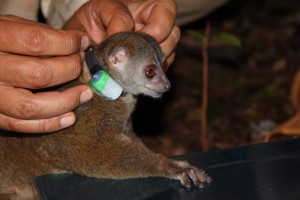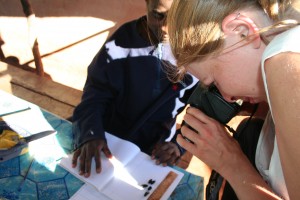What We Do
 Bristol Zoological Society saves wildlife through conservation action and engaging people with the natural world. We currently focus efforts on the Sahamalaza peninsula of northwestern Madagascar. We are working together with other European zoos to protect the last remaining populations of two critically endangered lemur species, the blue-eyed black lemur (Eulemur flavifrons) and the Sahamalaza sportive lemur (Lepilemur sahamalazensis).
Bristol Zoological Society saves wildlife through conservation action and engaging people with the natural world. We currently focus efforts on the Sahamalaza peninsula of northwestern Madagascar. We are working together with other European zoos to protect the last remaining populations of two critically endangered lemur species, the blue-eyed black lemur (Eulemur flavifrons) and the Sahamalaza sportive lemur (Lepilemur sahamalazensis).
How We Protect Lemurs And Other Wildlife
We raise awareness of the threats facing lemurs at the regional, national, and international level. For example, the zoological society worked with the government to create the Sahamalza Iles Radama National Park. In addition, the BZS Director of Conservation, Dr. Christoph Schwitzer, is the editor of Lemur News, an online and publicly available newsletter that connects the research and conservation community. In addition, the BZS has led the publication of several highly-visible articles, which effectively called attention to the plight of lemurs in Madagascar.
Some of these publications include:
- Schwitzer et al. (2014) Protecting lemurs – response. Science. 344: 358
- Schwitzer et al. (2014) Averting lemur extinctions amid Madagascar’s political crisis. Science. 343: 842-843
What Lemur Species We Protect
- Blue-eyed black lemur (Eulemur flavifrons)
- Sahamalaza sportive lemur (Lepilemur sahamalazensis)
- Sambirano mouse lemur (Microcebus sambiranensis)
- Northern giant mouse lemur (Mirza zaza)
How We Support Local Communities
 The Bristol Zoological Society actively engages with the public and scientific community, sharing knowledge, eliciting support, and guiding behavior change. We apply specialist skills to investigate conservation problems and to guide and support local communities in tackling environmental issues.
The Bristol Zoological Society actively engages with the public and scientific community, sharing knowledge, eliciting support, and guiding behavior change. We apply specialist skills to investigate conservation problems and to guide and support local communities in tackling environmental issues.
We work to improve the conservation status of target lemur species both through direct research and by supporting local NGOs in the region. As one of the core partners in the AEECL (Association Europeenne pour l’Etude et la Conservation des Lemuriens), we contribute to education in local communities by helping to employ 60 teachers in 37 villages and providing conservation education teaching materials.

